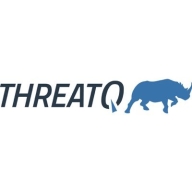

Exabeam and ThreatQ are products competing in security information and event management. Exabeam has an edge in user satisfaction due to its robust analytics and intuitive interface, while ThreatQ is recognized for its integration capabilities and threat intelligence.
Features: Exabeam includes advanced machine learning algorithms, streamlined workflows, and user behavior analytics. ThreatQ offers a centralized hub for threat intelligence, allows data aggregation from multiple sources, and provides comprehensive threat intelligence views.
Ease of Deployment and Customer Service: Exabeam offers a straightforward deployment process with comprehensive support suitable for complex infrastructures. ThreatQ has a flexible deployment model with on-premise or cloud-based options but may need more configuration.
Pricing and ROI: Exabeam has a predictable pricing model and favorable ROI, appealing to mid-sized to large enterprises. ThreatQ may incur higher setup costs due to customization but can offer greater ROI for extensive threat intelligence operations.

Exabeam Fusion is a cloud-delivered solution that that enables you to:
-Leverage turnkey threat detection, investigation, and response
-Collect, search and enhance data from anywhere
-Detect threats missed by other tools, using market-leading behavior analytics
-Achieve successful SecOps outcomes with prescriptive, threat-centric use case packages
-Enhance productivity and reduce response times with automation
-Meet regulatory compliance and audit requirements with ease
ThreatQ is a versatile threat intelligence platform designed for effective aggregation, analysis, and management of threat data. It streamlines threat information from multiple sources to enhance understanding and response capabilities.
ThreatQ supports incident response by correlating indicators of compromise and centralizing threat data in a single repository. This platform improves decision-making with its comprehensive threat landscape view and collaborative features. Its detailed analytics, customizable workflows, and scalability offer robust support for security teams. ThreatQ's integration with existing tools and powerful automation capabilities streamline threat detection and response processes. While some users point out the need for better integration and data visualization, ThreatQ remains a preferred choice for many due to its threat prioritization and reporting features.
What are the key features of ThreatQ?ThreatQ is implemented across various industries, providing valuable threat intelligence management in sectors like finance, healthcare, and government. These industries benefit from its incident response support, detailed analytics, and ability to centralize and prioritize significant threats, improving overall security posture.
We monitor all Threat Intelligence Platforms reviews to prevent fraudulent reviews and keep review quality high. We do not post reviews by company employees or direct competitors. We validate each review for authenticity via cross-reference with LinkedIn, and personal follow-up with the reviewer when necessary.